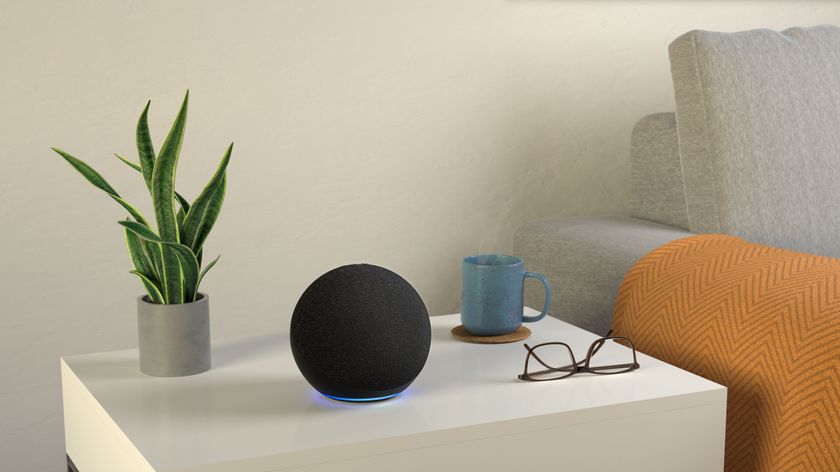Amazon Echo (2020) vs Apple HomePod mini vs Google Nest Audio: the top smart speakers compared
2020’s latest smart speakers go head to head
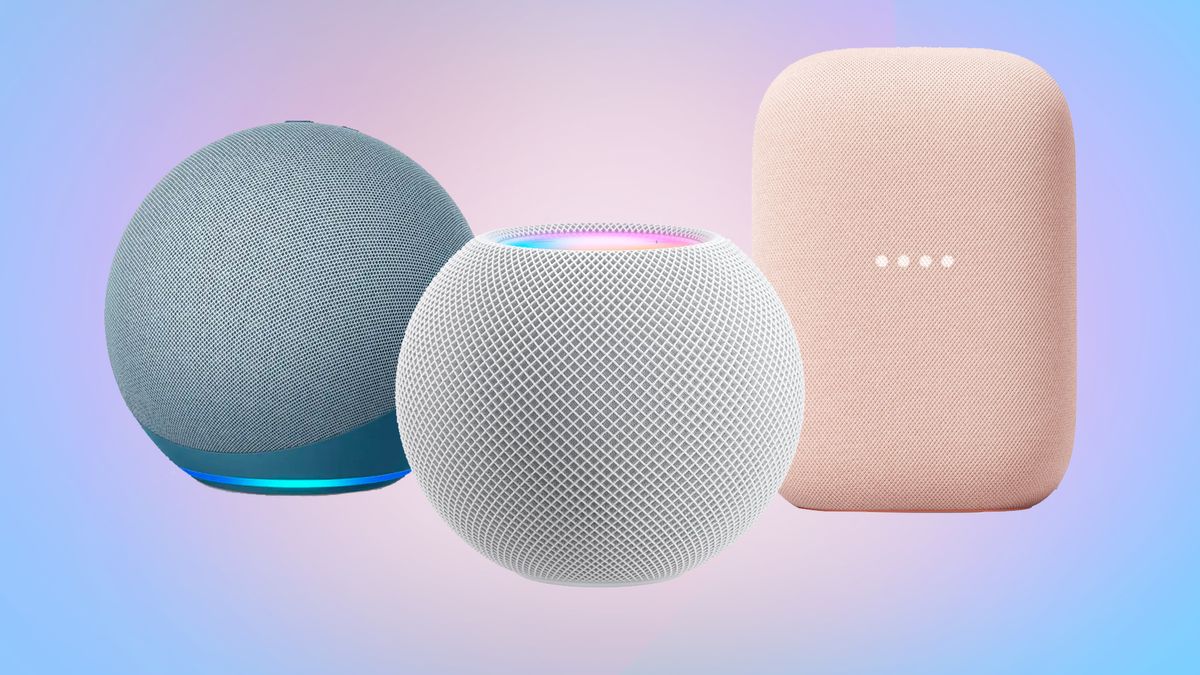
2020 has been an important year for smart speakers, with the three biggest players – Amazon, Apple, and Google – all releasing brand new versions of their popular wireless smart home devices.
The Amazon Echo (2020), the Apple HomePod mini, and the Google Nest Audio all look starkly different to their predecessors, with all three companies giving their latest smart speakers huge design overhauls.
Not only that, but all three are priced nearly identically, costing $99 / £89 / AU$149 (though the HomePod mini is £10 more expensive in the UK, costing £99).
While we love the fact that the biggest smart home companies in the world have all released affordable smart speakers in a year when more of us are staying home more than usual, the similarities between the three wireless speakers doesn’t exactly make it easy to pick one.
That’s why we’ve put together this handy guide where we’ll take you through the positives and negatives of each smart speaker, kicking off with the Amazon Echo (2020).
- The best smart speakers you can buy today
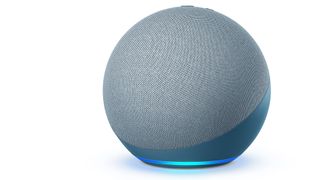
Amazon Echo (2020)
Reasons to buy
Reasons to avoid
The Amazon Echo 2020 is the fourth generation of the tech giant’s smart speaker, and comes with a wealth of updates, including an all-new design, a new AZ1 neural processor, and the inclusion of a Zigbee smart home hub.
It’s powered by Alexa, which means you can use it to control a wealth of smart home devices, as well as asking the voice assistant basic questions and make calls within your country of residence.
Get daily insight, inspiration and deals in your inbox
Sign up for breaking news, reviews, opinion, top tech deals, and more.
Cool, futuristic design
In our Amazon Echo (2020) review, we loved the futuristic spherical design that Amazon has given to its flagship smart speaker. While Amazon sent us the Charcoal color sample to review, the Echo is also available in two other colors – Glacier White and Twilight Blue, all of which will look understated in your home.
It retains the fabric mesh of its predecessors, but the iconic Alexa blue light right has been moved to the bottom of the speaker.
Four easy-to-use control buttons sit on the top (including a button to turn off the microphone if you’re concerned about privacy), and you’ll find a power connector and a 3.5mm aux line in/out jack at the back, the latter of which can be used to either send the audio signal to an external speaker or connect the Echo to a separate source like your phone or tablet.
Total smart home control
The inclusion of a Zigbee hub means that the Echo (2020) is the best smart speaker for controlling your other smart home devices. Connecting a smart device, whether that’s a smart light bulb, smart thermostat, or security camera, is typically as simple as plugging the product in and asking Alexa to search for devices. Once it’s found, you can change the name of it inside the Alexa app and you’re done.
Alexa routines can be created inside the smartphone app and can consist of, say, turning on the light any time you open your closet by using a door sensor and a smart light bulb, or have your thermostat turn on when you get home by telling Alexa that you’re back.
Alexa itself has improved too; while it used to take Alexa a second or two to process our requests, the new Echo will respond in half the time thanks to the new AZ1 neural processor that will work in tandem with a revised speech model to process commands. That feature will go into full effect later this year, Amazon told us, but we already noticed a small boost in performance.
Comprehensive music streaming support
The Amazon Echo comes with support for a host of music streaming services, with the company choosing user convenience over loyalty to its own ecosystem (we’re looking at you Apple.)
Alexa supports most major music streaming services including Amazon Music (Standard and HD), Apple Music, Spotify, TIDAL, Deezer, Pandora, SiriusXM, iHeartRadio, and TuneIn, though you’ll mostly want to stick with the default Amazon Music, as you’ll then have around 30,000 songs at your fingertips, plus a smorgasbord of podcasts. If you have a Fire TV, Alexa can control that, too, but if that’s a feature you’re looking for specifically, you should pick up an Amazon Fire TV Cube instead.
Any downsides?
While the audio quality has been boosted since the third-gen Amazon Echo, there are still improvements that could be made with the Echo (2020).
The spherical design may lead you to believe you’re getting 360-degree sound, but in reality you’re getting pretty focused directional audio, which sounds best when you’re sitting directly in front of it.
The audio isn’t particularly detailed either, and the Echo doesn’t reach the same volume levels as some of the best Bluetooth speakers on the market; still, it’s fine for casual listening or providing a little background music while you go about your day.
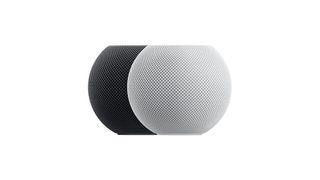
Apple HomePod mini
Reasons to buy
Reasons to avoid
Following years of speculation, the Apple HomePod mini finally launched earlier this year, offering a surprisingly cheap entryway to the Apple smart home ecosystem. As its name suggests, it’s far smaller than the original Apple HomePod, and like the new Echo, sports a (sort of) spherical design that further differentiates it from its predecessor.
Incredible audio quality
For us, the audio performance is the key reason to buy the HomePod mini. It's excellent for a speaker that's so small, and it really feels like the right mix of price and sound quality. The bass isn't too heavy, vocals aren't lost in the mix, and when you pair two minis the stereo experience is really immersive.
The audio isn’t as powerful as the original HomePod, but it certainly beats the new Amazon Echo and the Google Nest Audio – and the mini is far less unwieldy (and expensive) as its predecessor.
Sleek design
Like the Amazon Echo (2020), the Apple HomePod mini arrived with a big design overhaul, sporting an understated half-spherical build with a gray or white latticed mesh – however, unlike the Echo, it does come with 360-degree sound.
On the top of the smart speaker is the Siri light display, which glows as you interact with the smart speaker. The small sphere sits on a flat bottom, and while it's weighty enough to not get easily knocked around, it's got nowhere near the heft of the original HomePod. That lack of weight also means you won't need to worry about it marking the surface it sits on, as some users found with the larger HomePod.
Easy setup
The Apple HomePod mini is incredibly easy to set up – as long as you have an iPhone. Once it’s plugged in, you can simply hold your iPhone near to the speaker and you’ll get a notification asking you to connect; tapping this activates the camera which you can use to find the swirling Siri light on the top of the HomePod mini.
Then it’s just a few simple taps to add the speaker to your Wi-Fi network and sync across your Apple ID, and set up personalized information for other people in your household. You can also assign it to a specific room so you can ask Siri things like “play music in the bedroom” and pair it with another mini speaker for stereo sound.
Any downsides?
As with the original HomePod, the HomePod mini suffers from a lack of smart home compatibility; while you can use Siri to control your smart home devices, we found in our Apple HomePod mini review that the voice assistant didn’t always respond to our commands accurately.
Another issue is the lack of support for third-party streaming services. If you don’t have an Apple Music account, you’re rather limited if you want to play music using your voice. You can’t ask the HomePod mini to play anything through Spotify – that can only be enabled through AirPlay, and requires using your phone rather than the simpler method of asking Siri to play tunes with your voice. Essentially, you'll need a subscription in order to make full use of your HomePod mini, though Apple recently added Pandora support, so there’s that.
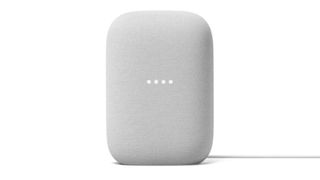
Google Nest Audio
Reasons to buy
Reasons to avoid
The Google Nest Audio is the successor to the company’s first smart speaker, the Google Home – and since then a lot has changed, including a name change designed to integrate its speakers and smart displays with the Nest ecosystem.
It relies on Google Assistant to work, which comes with the huge wealth of information provided by the search engine, as well as integration with the tech giant’s other products and services, including Calendar, Gmail, Google Duo, and more.
Subtle design
Of all the smart speakers we’re comparing here, the Google Nest Audio is the least conspicuous, with a pebble-like build that will blend into any home easily. Sure, it’s not the most exciting-looking smart speaker we’ve ever seen, but we love the fact that it comes in a range of stylish pastel colors. Plus, it’s made from 70% recycled materials, and each unit will, according to Google keep, 1.2 500ml plastic bottles out of landfills.
Improved microphones
Google worked to improve the microphones built into its smart speaker, and we found in our Google Nest Audio review that it was very adept at picking up our voice when giving Google Assistant commands, even when listening to music.
Google Assistant smarts
Google Assistant has the benefit of having the world’s most popular search engine powering it, and that means it’s fantastic at answering your questions. Plus, the addition of built-in Chromecast means you can use the speaker to control compatible TVs, playing shows and movies using your voice alone.
Add to that fantastic integration with Google’s suite of services, and you’ve got the ideal smart speaker for anyone who uses Google on the reg.
Any downsides?
Despite its name, the Google Nest Audio isn’t the best-sounding wireless speaker out there. The sound quality overall isn’t terrible, and the Nest Audio can give you an enjoyable listening experience at moderate volume levels – but you wouldn’t have to pay very much more for a speaker that can deliver much more bass, detail, and sparkly treble without any harshness.
Saying that, we did appreciate the ability to adjust the EQ settings in the Google Home app.
Olivia was previously TechRadar's Senior Editor - Home Entertainment, covering everything from headphones to TVs. Based in London, she's a popular music graduate who worked in the music industry before finding her calling in journalism. She's previously been interviewed on BBC Radio 5 Live on the subject of multi-room audio, chaired panel discussions on diversity in music festival lineups, and her bylines include T3, Stereoboard, What to Watch, Top Ten Reviews, Creative Bloq, and Croco Magazine. Olivia now has a career in PR.


